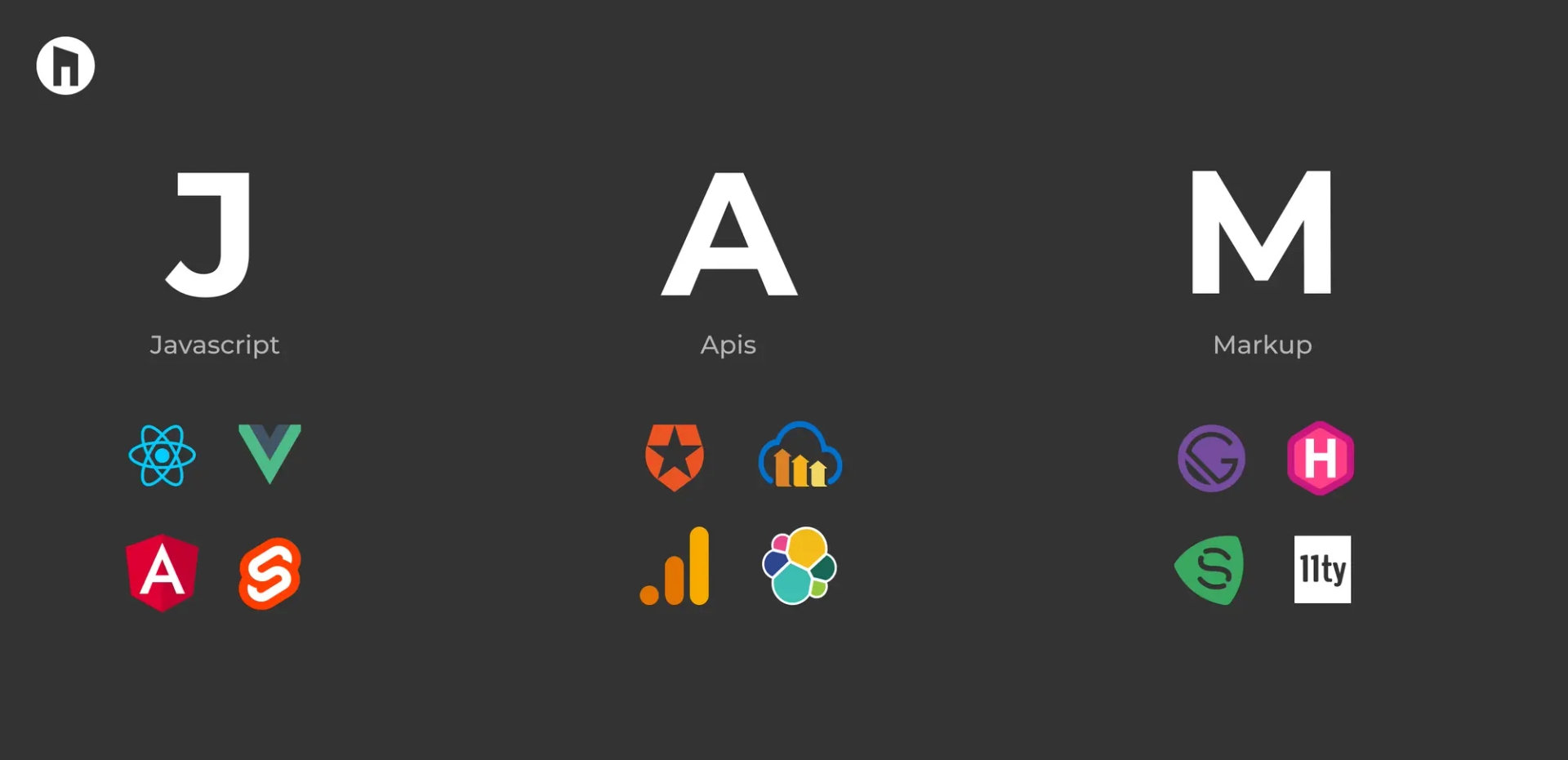What is JAMstack?
In today’s fast-forward web development landscape, new technologies and methods are popping up all the time, promising faster, better, and safer ways to create websites. One such methodology that’s becoming increasingly popular is Jamstack.
JAMstack stands for JavaScript, API, and Markup, but it’s not a particular technology or framework. Instead, it’s a modern web architecture that moves away from the server-centric model and towards a distributed, decoupled approach.
The Evolution of Jamstack


The history of Jamstack goes back to the beginning of web development. Back then, developers were looking for ways to make websites faster, safer, and more responsive. As JavaScript frameworks such as React, Vue, and Angular grew in popularity, developers started looking for new ways to use client-side rendering to create faster, more dynamic web experiences.
Innovators of the Jamstack
Back in the mid-to-late-2000s, some of the most prominent web development pioneers (Matt Biilmann, Chris Bach) coined the term “jamstack” and argued for a new approach to web development. Jamstack focused on the advantages of pre-building a website and serving it as a static file from a CDN (content delivery network), rather than creating pages dynamically on every request.
The Growth of Jamstack


As Jamstack’s approach gained traction in the web development world, a thriving community of tools and platforms was created to back it up.
Today, Jamstack has become the go-to framework for web developers and businesses, inspiring creativity and pushing web innovation to new heights.
Below is the detailed analysis of JAMstack:
- JavaScript (JS): JavaScript is a widely used programming language in web development to provide interactivity and dynamic functionality to websites. In Jamstack, JavaScript is primarily used to manage client-side logic such as user interaction and dynamic content rendering.
- APIs (Application Programming Interfaces): An application programming interface (API) acts as a bridge between various software applications, enabling them to talk and interact with one another. In the case of Jamstack, an application programming interface (API) is used to load dynamic data from an external source, such as a database or a third-party service. APIs allow developers to build dynamic and custom web experiences while keeping their website architecture fast and efficient.
- Markup: Markup is the content and structure of a web page. Most web pages are written in HTML, which stands for Hypertext Markup Language, and are styled using CSS, which stands for Cascading Style Sheet.
In Jamstack, the markup is built during the development process and is served to the client as static files. This means that you don’t have to worry about server-side rendering. This means faster loading times and better performance.
Curious about the inner workings of Jamstack?
Instead of creating web pages automatically on every request, as is the case with traditional SSR (Server-Side Rendering), Jamstack pre-builds your site during the development process. This pre-built site is deployed to a CDN (Content Delivery Network) where it’s delivered directly to your users. When they need a page, they get it right away, without having to wait for the server to process the request.
Discover the Advantages of Jamstack
- Performance: Delivering pre-built static files straight from a content delivery network (CDN) allows Jamstack websites to load faster, improve performance, and ultimately improve user experience and search engine rankings.
- Security: The static nature of Jamstack websites and the fact that they are isolated from the server makes them less susceptible to common security issues like SQL injection and XSS attacks.
- Scalability: The architecture of Jamstack scales well because CDNs can handle large volumes of traffic without impacting performance. Jamstack is also decoupled, which makes it easy to integrate with third-party services and APIs, allowing developers to add new functionality and features without sacrificing performance.
Conclusion
To sum up, Jamstack focuses on speed, security, and scalability in web development. With the help of JavaScript, APIs, and markup, you can create fast, secure, and scalable websites that provide outstanding user experiences.
Whether you’re an experienced web developer or you’re just getting started, Jamstack has something for everyone.
